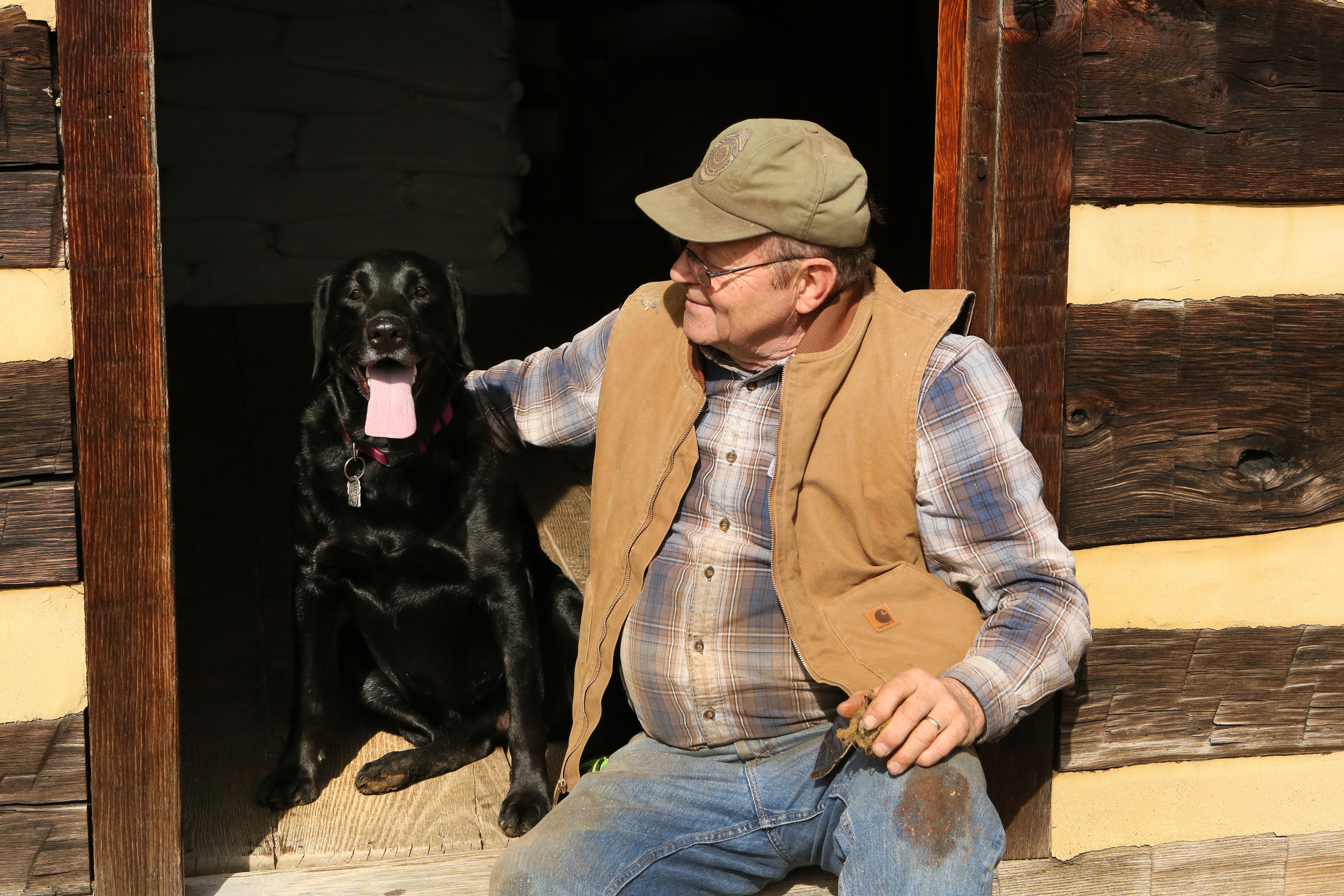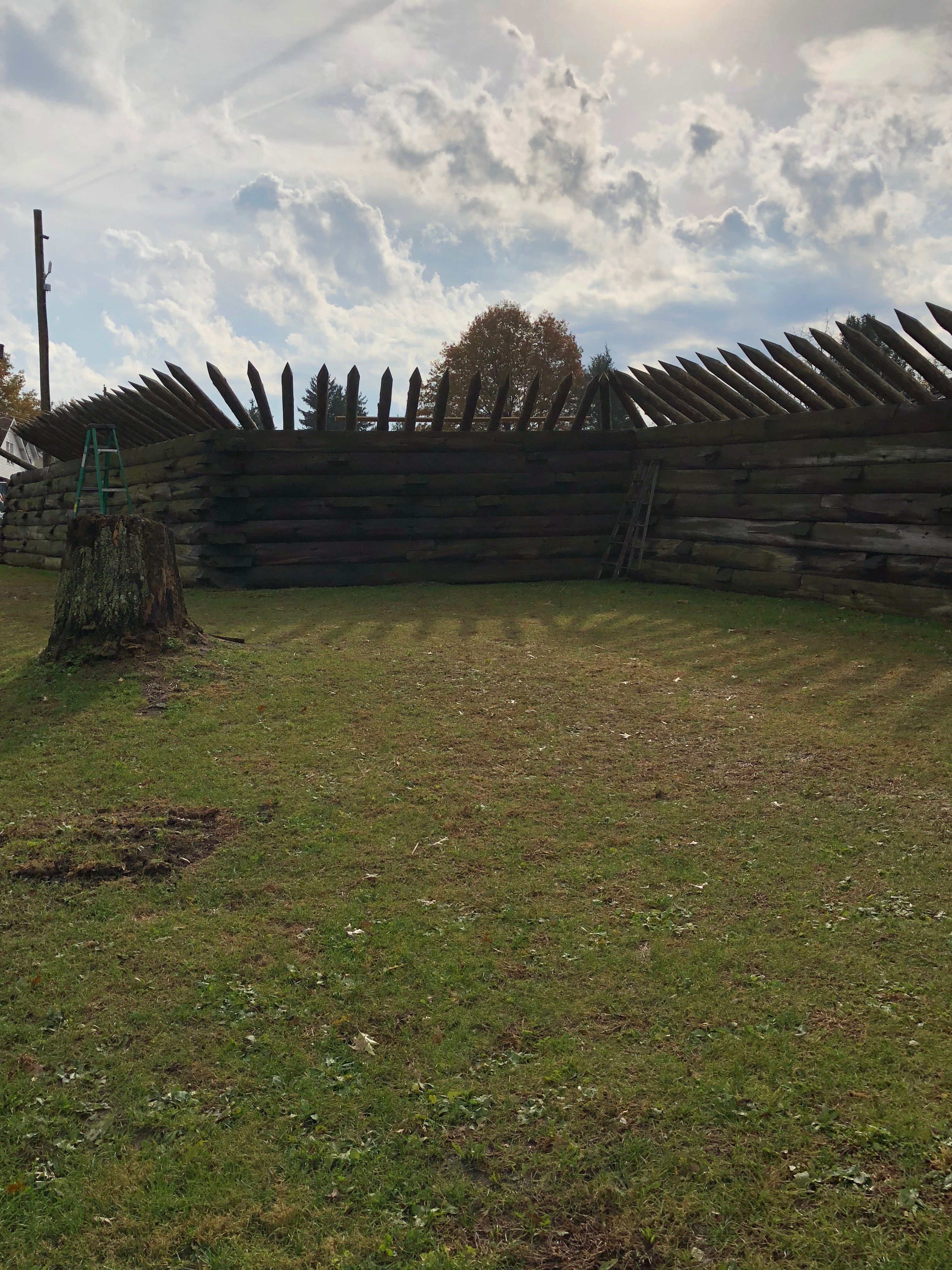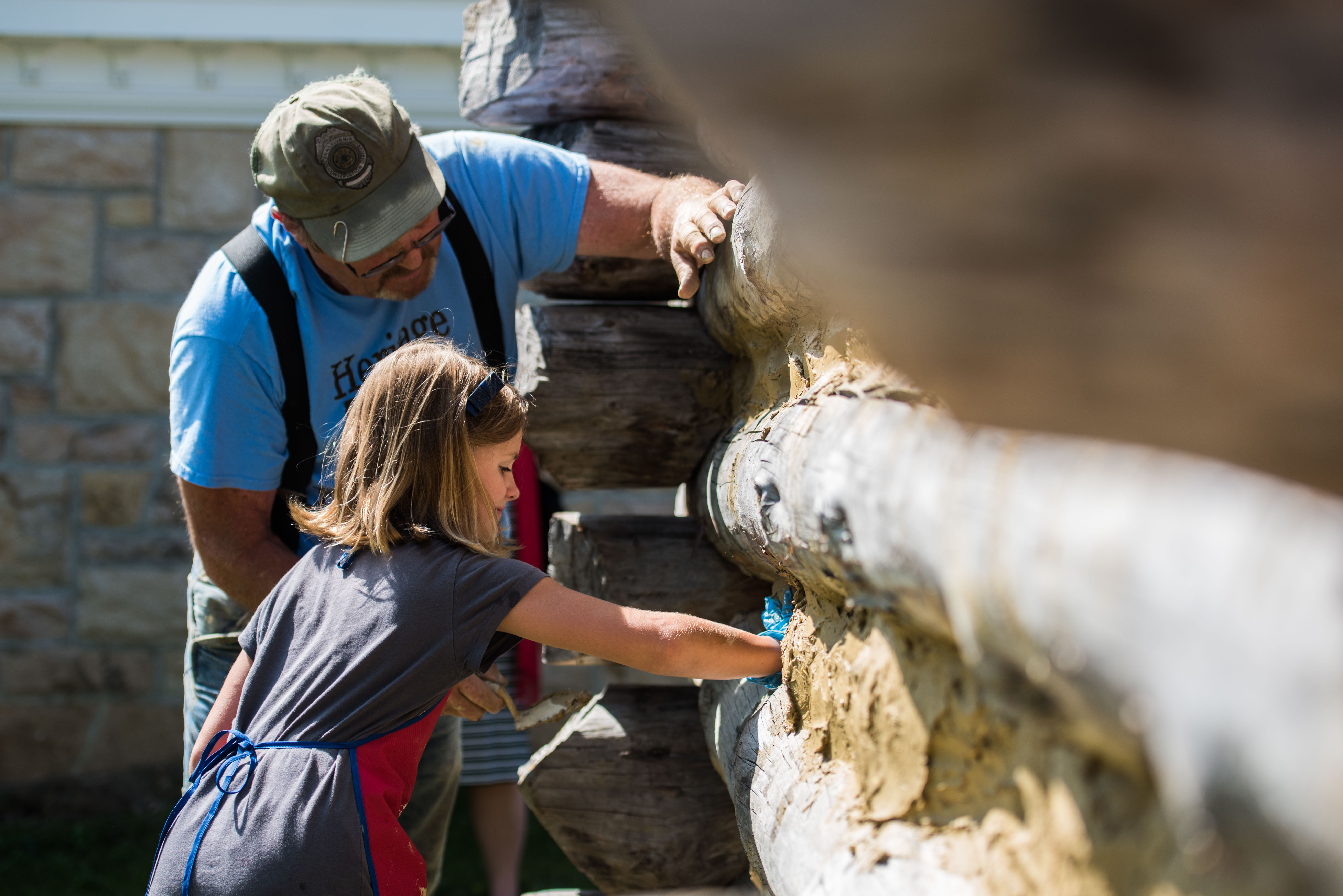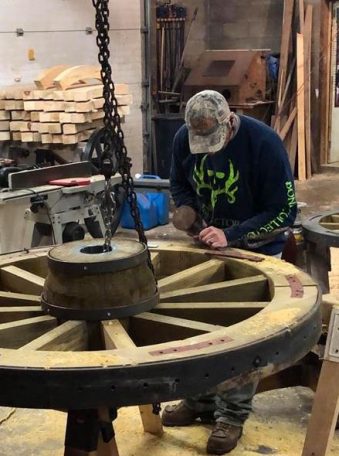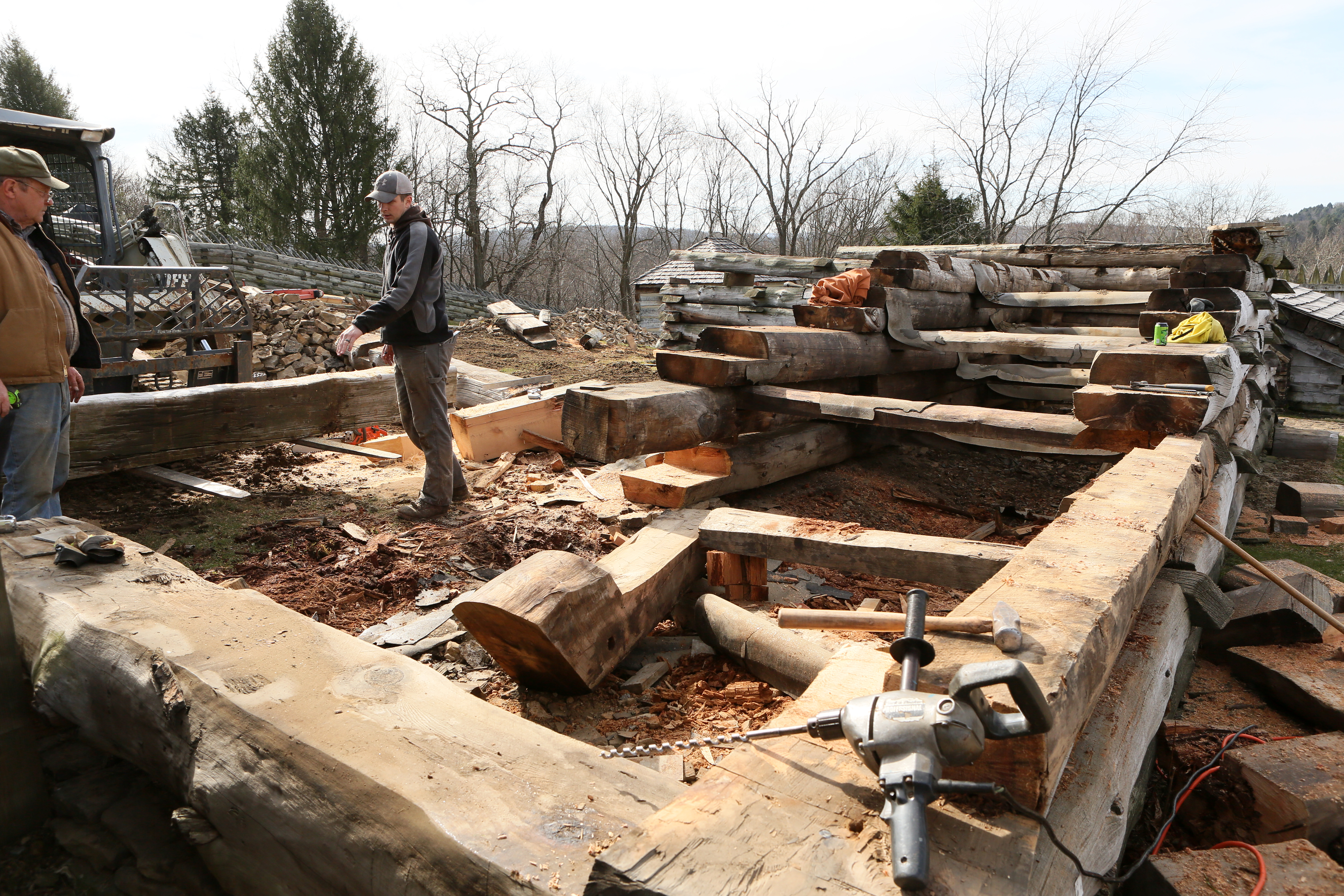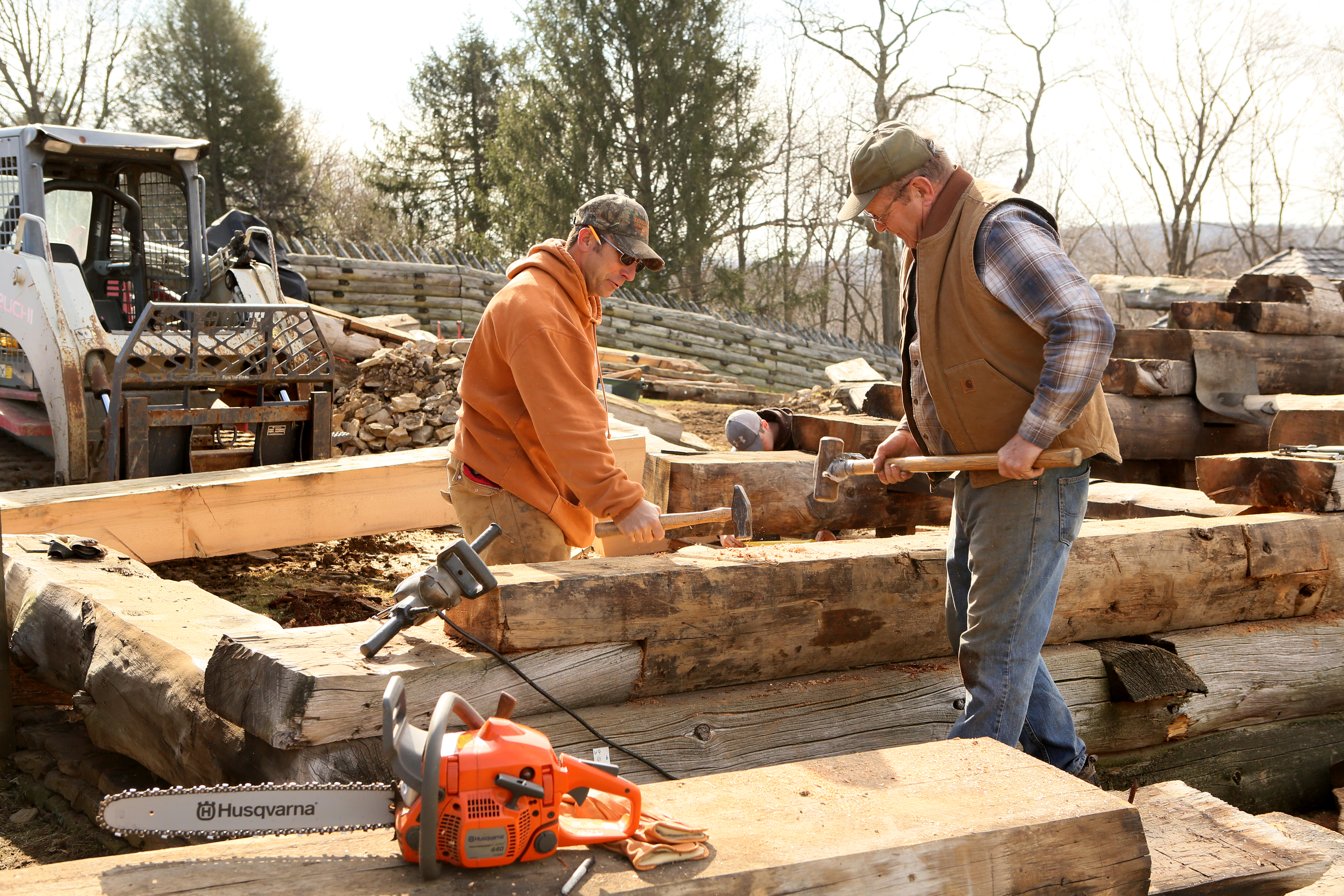Fort Ligonier was Brad Mooney's World
Fort Ligonier suffered an immeasurable loss when Brad Mooney passed away in March 2021. Since the late 1980s, Mr. Mooney of Heritage Restorations worked on the latest and most extensive phase of the fort’s reconstruction along with recreating the artillery train of the 1758 Forbes Campaign. Mr. Mooney’s work at the fort began with reconstructing the outer retrenchment, hospital, officers’ quarters, and the Fascine Cannon Battery. The vital preservation projects he spearheaded helped develop Fort Ligonier’s reputation as the finest reconstructed French and Indian War fortification in America.
“Brad was recognized nationwide as an expert in the repair and reconstruction of completely accurate renditions of 18th-Century American stone and log structures and dwellings, said Charles A. Fagan III, Fort Ligonier Board Trustee (Emeriti). “Brad’s vast historical knowledge provided Fort Ligonier’s staff with answers to complex historical questions. He considered the fort to be “’his world.’”
In honor of Brad Mooney's legacy of excellence for maintaining Fort Ligonier’s accuracy, the Fort Ligonier Board of Trustees has established The Brad Mooney Historical Restoration Fund at Fort Ligonier. If you would like to make a donation in Mr. Mooney's memory to support Fort Ligonier's ongoing preservation efforts, please go to the donate page of our website.
